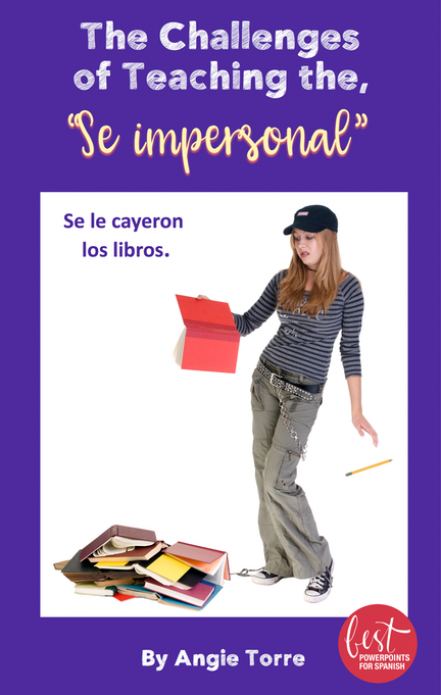The Challenges of Teaching the Se impersonal, the Se no intencional and La voz pasiva
I was watching my used-to-be Student Teacher now turned amazing teacher explain the se impersonal using a method that made me raise two eyebrows. Why didn’t I teach it that way? She is so GOOD!
No matter how hard we try, students will confuse the reflexive, the impersonal “se” and the non-intentional “se”. In order for them to see the difference, we must formally teach the difference and check for understanding. I like how she made them actually NAME which “se” they were talking about.

Another snag in teaching the non-intentional “se” is that , after we teach it, students try to make EVERY sentence non-intentional. I ask them, “Where’s the object? There has to be an object.” For example: Se me cayó EL LIBRO. That helps them see the difference.
In my PowerPoint and lesson plans, I ask students to tell me what “se” means in many different sentences.
Humor is also important to imbed concepts. Memes are great for attention-getters.


Comprehensible Input
Most importantly, students hear the non-intentional “se” repeated in context as I narrate the TPR Story, and then they write their own story of mishaps. By the time we finish, they have mastered all the uses of “se”.
Here is the story: TPR Story for the Non-intentional SE
Here is the PowerPoint: Spanish Uses of SE from Reflexive to Non-intentional
Or, you could save yourself the time of writing the lesson plans and use these instead: No-Prep Lesson Plans and Curriculum for the Se impersonal and Se no intencional

